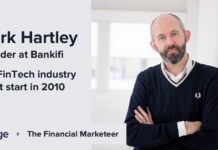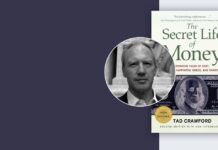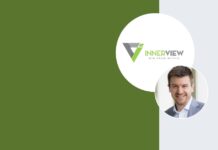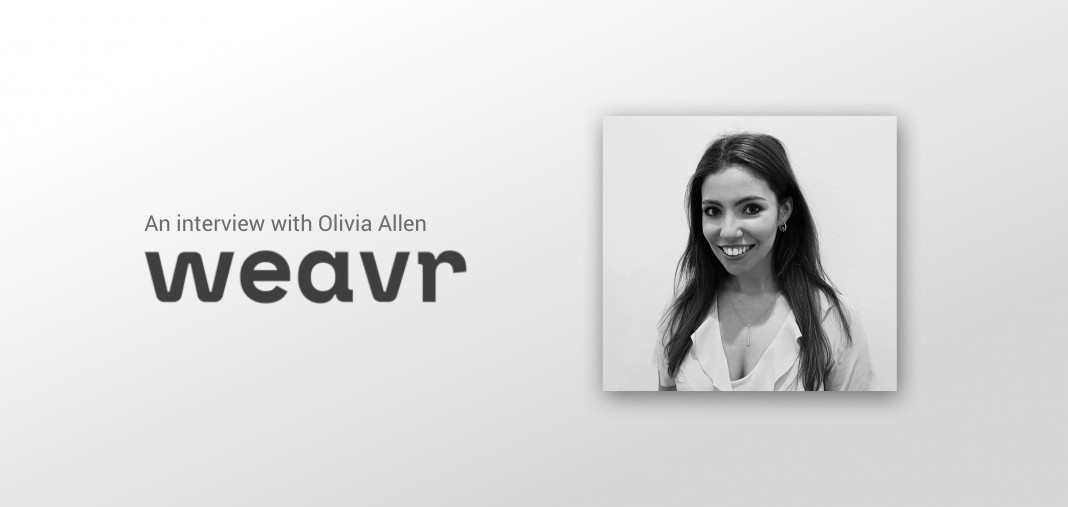Listen to the podcast interview
What is developer-first banking?
When you visit the Weavr website for the first time, you’re greeted by an intriguing message; ‘welcome to developer-first banking’.
What is ‘developer-first banking’? I posed this question to my latest guest on the Financial Marketeer podcast, Olivia Allen, who is Marketing Lead at Weavr. It turns out, ‘developer-first banking’ is known more commonly as ’embedded banking’.
“Embedded banking is a subset of banking as a service (BaaS),” explains Olivia. Going on to break that down, Olivia continues, “if we look at ’embedded’, it’s basically a fancy word for ‘integrated’.
“The ‘banking’ piece refers to features such as card issuance, generating accounts, transferring funds etc. Basically all of the services you’d expect from a typical banking provider.”
Bringing all of that together, Weavr exists to help businesses to integrate banking services into their products and solutions. “Our solution is designed to be flexible and simple, you just pick your APIs, write some code and you basically get going.”
How is embedded banking used?
“The likelihood is that you will have interacted with embedded banking before,” explains Olivia.
“If you think of businesses like Airbnb, Uber, these businesses have all integrated the payments part of the transaction seamlessly into their offering. It’s all about making financial services invisible.”
It’s from this concept where Weavr gets its name; it’s about ‘weaving’ financial services into the fabric of an organisation or product.
“[Embedded banking] opens up this whole host of opportunities and benefits, from improved user-experience for the customer to customer retention, greater control and revenue generation.”
Identifying the target audience
“The cool thing about Weavr is that it’s designed specifically for the services sector, not just fintechs…so we’re talking to people within a variety of different service markets like health, education, travel…”
So, how does Weavr’s target audience go about finding the services on offer? “Embedded banking is kind of an unknown,” explains Olivia. “We need to do a lot to shape that [understanding].
“When I talk to my friends and family, ’embedded banking’ doesn’t really mean a lot to them, so we need to explain it to people in a way that makes sense.
“We’re targeting people who aren’t financial services experts which means we need to de-mystify what it is we do within financial services to make sure that we’re accessible.
“That’s everything from removing jargon from our content to putting out this content that explains the proposition at a very high level and in relation to the segment that they (the customers) are working in.”
Not everyone knows what they need yet
“Not everyone that we speak to speaks finance and not everyone who builds a business knows what they need when they are at that early stage,” Olivia tells me.
It’s as a result of this that a lot of the conversations Weavr is having with its market happen before there is even a need for the services on offer. “Sometimes we have these conversations with businesses that are too early and then they come back to us a few months later and they’ve hit that wall that we’ve foretold…we’re always open to those [early] conversations.”
Managing the workload as an early stage business
Weavr is at an early stage of its growth and as a result, Olivia forms a marketing team of one. Because of this, she has to be smart about how she fulfils the firm’s marketing ambitions; “I have to lean on other people’s expertise,” Olivia tells me.
“I have to be objective about the gaps that I have and then go and find partners in that space who will help us overcome them.”
Olivia, as she explains, is clearly a big believer in continuous learning and she uses that approach to continuously grow a network of people whom she can rely on for the support she needs.
Lead generation and brand reputation
When it comes to choosing communication channels, Olivia splits her focus between two core areas; lead generation and brand reputation.
“LinkedIn advertising kind of hits both [of these areas], we’re getting our messaging out there as well as driving engagement with our prospects.
“It’s also about content strategy as well, pushing forward this messaging and really educating the market about what embedded finance is is super important to us.”
Praise for LinkedIn
Something that stands out is Olivia’s praise for LinkedIn as a channel to reach an audience. “[LinkedIn] is a fantastic tool for engaging with prospects directly…it’s also great for scoping out a broader audience, figuring out how large the segment is that you can be targeting.
“We use it for everything from advertising, sharing content and direct messaging and engagement…my recommendation is that any business that isn’t using it should be.”
Growth and messaging
“[The focus of the average day for me] is really about growth and messaging. Growth, from a marketing perspective, is all about customer acquisition and retention…by optimising the different touch points in the funnel.
“In terms of the message, as I mentioned embedded banking is an emerging market and it’s still an unknown, so we’re really working to change that.”
Another interesting aspect of Olivia’s day-to-day routine is in speaking to the firm’s sales team. “[Talking to our sales team is about] seeing what patterns we can spot within the conversations they are having with customers.”
Getting into financial marketing
My conversation with Olivia moved onto focussing on how she came to be where she is within her career.
“I’d never really considered fintech as the space I wanted to get into, but once I was in it, I was kind of hooked,” Olivia tells me as she recounts her journey from handing in her final dissertation at university.
Her first role in fintech marketing was a hybrid one, split between sales and marketing, but it was the marketing side of the role that captured Olivia’s imagination the most.
Despite moving away from the sales element of her original role, Olivia still speaks very highly of the lessons to be had from working in a sales role for aspiring marketers; “that opportunity to do sales was invaluable, it was the quickest way that I could get up to speed with the business and figure out what people were asking for…so that I could then feed that into the marketing that I would undertake further down the line.”
Planning a career in marketing
I asked Olivia what it was like when she stood at the start of her journey into a career in marketing and what advice she would give to others in that position. “Take that first step, take that job where you’re not sure where it’s going to lead,” explains Olivia when addressing the point that it’s ok to not have a plan for the next five years.
“Understanding your market is so key (once you’re in that job), join every single sales call you possibly can. From my experience, it’s the quickest way to get up to speed and the best way to figure out what it is that people want and what they’re looking for.
“You [also] need to find partners and people that you can work with and who you can trust…and once you find them, never let them go!”











